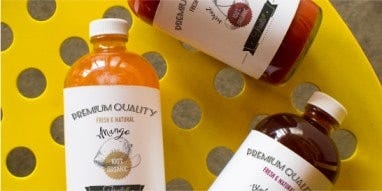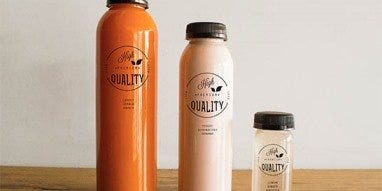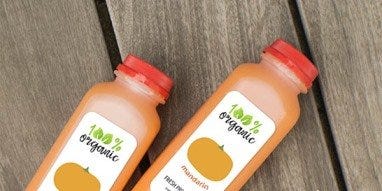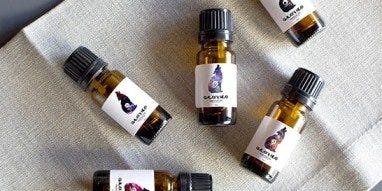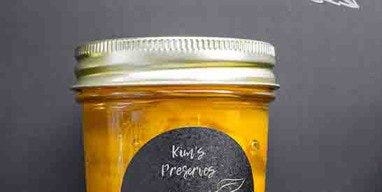What and How to Recycle: Plastics, Bottles, Cardboard and More!
What and How to Recycle
YES - PLACE IN RECYCLING
|
NO - PLACE IN TRASH
- hardcover books
- napkins, paper towels, or tissues
- soiled paper cups or plates
- paper soiled with food or liquid
- paper with a lot of tape and glue
- plastic- or wax-coated paper (candy wrappers, plastic take-out containers, etc.)
- photographic paper
Flatten and bundle large pieces of corrugated cardboard and tie with sturdy twine, or break into small pieces to place in your recycling bin or bag.
---
Recycling Junk Mail
We call it junk mail, the US Postal Service calls it third class bulk mail, and advertisers call it direct mail. Whatever its name, we all get lots of it. Junk mail includes the advertisements, credit card applications, donation solicitations, catalogs, and numerous other pieces of mail that are sent to thousands of potential customers at once. The US Postal Service delivers more than 80 billion pieces of direct mail each year. That's 4 million tons of paper that is ultimately discarded, annually. There are several ways to try to stop or reduce the flow of unwanted mail.
- How to Stop Junk Mail in 6 Easy Steps
- Stopping Unsolicited Mail, Phone Calls, and Email
- How You Can Stop Getting So Much Junk Mail
- Reduce
Avoid putting your name on mailing lists. When you enter contests or sweepstakes, subscribe to magazines, and fill out warranty cards, your name and address often are added to mailing lists that are given or sold to other organizations.
Contact companies directly to ask them to cancel duplicates or remove your name from a mailing list. Simply call or write to customer service and ask to be removed. Remember though, the next time you order something from the company, your name goes right back on the list, so tell companies not to rent or sell your address: write "Please do not share my information with other lists" next to your name.
Register online or by mail to the Direct Marketing Association's Mail Preference Service. This service is good for five years. It works only for national mail, not local mail, and only for residential addresses, not businesses.
Remove your name from lists used for credit card offers. The nation's major consumer credit bureaus like Equifax, Experian, and TransUnion have established a single toll-free number that you can access 24 hours a day, to have your name removed from their mailing lists for credit offers. The recording will ask for your full name, address, telephone number, and social security number. Calling this number should reduce the number of credit card offers you receive: 1-888-5-OPTOUT.
Tell banks and credits card companies not to send you credit card checks by mail. If you know you are never going to use or need such checks, then call your bank and credit card companies and ask them to stop sending these to you. These checks can be forged and you could get stuck with the bill so if you don't want them, make sure you don't get them.
Try shopping online. Most catalog companies also have their product line available on their website. You may get more e-mail, but you probably won't get more catalogs.
- Reuse
Share catalogs with a friend or neighbor if you really want to see the latest products that you can order. There's no need for everyone to get the catalog, especially if you just look and rarely order.
- Recycle
Sort mail directly into a paper recycling bin. Also place a recycling bin near your desk or wherever you do the most paperwork, to make recycling easy and convenient.
Shredded paper can be recycled. You may prefer to shred (or tear up) personal documents containing data that might be used to gain access to your current accounts or open a false account in your name. Opting out of credit card offers also prevents personal information from landing in your mailbox. Though be aware that the vast majority of identity theft occurs through sophisticated computer hacking, rather than papers stolen from your wastebasket.
---
Reducing & Disposing of Household Toxics
You may be surprised to learn that commonly used household and automotive products can be harmful to you, your family, city workers, and the environment if improperly stored, used, or discarded. In the home, accidental swallowing or improper use of products can cause severe illness and even death. The Poison Control Center receives over 35,000 calls each year concerning unintentional poisonings, most involving children under the age of five.
Automotive products and household products like cleaners, paint, and pesticides can also be dangerous after they are thrown away. If improperly discarded, sanitation workers can suffer eye, respiratory, and burn injuries.
Before buying, using, or discarding potentially harmful products, consider the following.
Read the label. Read labels and look for signal words - DANGER, POISON, WARNING, CAUTION - that indicate the level of hazard. Products labeled DANGER or POISON are most hazardous. Pay attention to other messages on the label such as "causes burns on contact," "vapors harmful," or "extremely flammable." Learn to recognize these phrases and take them seriously.
Follow product instructions. More is not better - you won't get twice the results by using twice as much. Use products only as directed and only when necessary.
Store potentially harmful products out of the reach of children. Use child-proof cabinet locks.
Post emergency phone numbers (fire, medical assistance, poison control center) by your phone and teach children how to use them.
Call for help in case of poisoning. If you think a family member (or pet!) has been exposed to a harmful product, call the NYC Poison Control Center Hotline at 1-800-222-1222. The Hotline is available 24 hours a day, 7 days a week.
---
Reducing Food and Yard Waste
New York City residents discard more than one million tons of organic waste each year. This includes kitchen scraps (fruit and vegetable peels, egg shells, tea bags, coffee grounds and filters, and used paper towels) as well as yard waste (leaves, branches, weeds, and grass clippings).
- Reduce
You can make your own compost in your backyard or side alley, or keep an indoor worm farm.
Leave it on the lawn! After you mow, just leave the clippings on the lawn. The nutrients in your grass clippings will nourish your lawn, reducing the need for chemical fertilizers.
Garbage disposals are also an alternative to disposing of food waste in your trash. Garbage disposals are simple, electric motorized grinders attached under the counter of a kitchen sink that mince food scraps as they flow down the drain.
---
Food and Product Packaging Recycling and Reusing
Just about everything you buy comes in packaging. Packaging protects your purchases from damage, dirt, and tampering. It provides information about the product, its ingredients, directions for use, and how to contact the manufacturer.
But packaging is expensive and there's a lot of it. Only about 9 percent of the cost of a box of cereal is for the cereal - the other 91 percent of the cost is for the package and advertising. Packaging makes up one-third of New York City's waste stream. The next time you go shopping, consider some of the tips below.
- Reduce
Look for products that have no or minimal packaging. For example, buy the extension cord or deodorant that comes without a box. Select fruit and vegetables that are not packaged in trays and plastic wrap. Pay for the product, not the package!
Less is better. Look for single layers and single materials in packaging. For example, choose a plain paperboard box instead of molded plastic with a card.
Buy the largest size that is practical, if you'll use the product and have storage space. The economy size uses less packaging than multiples of the small size.
Try buying concentrates for items like juice or laundry detergent and add your own water. Why pay extra for the water?
Choose products in tubes instead of pumps. Did you know that the packaging for pump toothpastes uses three times as much plastic as a toothpaste tube?
Say "no bag, thanks" whenever you can. If you're buying only a few small items, just put them in your purse, tote, or briefcase. Or bring your own reusable bag. At the dry cleaner, skip the film wrap, or buy a reusable garment bag.
- Reuse
Reuse plastic bags. Take them back to the store on your next shopping trip; some markets offer a small rebate per bag to customers who reuse their shopping bags. Reuse plastic grocery bags to line your wastebasket or kitchen garbage can, or for tote bags.
Reuse plastic tubs and glass jars. So many products come into your home in reusable plastic containers. Thoroughly clean these containers and use them to store leftovers, pack school lunches, or store small toys or supplies.
Clean and refill plastic bottles with juice or tap water for school lunches, outings, or car trips.
Reuse boxes, bubble wrap, and other packaging materials you have received, or ask for reusable boxes from local stores. Paper bags make excellent wrapping paper for shipping packages.
Bring your bubble wrap and polystyrene packaging peanuts to a nearby commercial packagingf service like Mail Boxes, Etc. for reuse. Or try the Plastic Loosefill Council's website for a list of convenient drop-off locations. Do not place Styrofoam peanuts in your recycling bin.
- Recycle
Look for recyclable packaging when you shop, and recycle product containers.
Choose packaging made with recycled content. Recycling works when people buy products and packaging made from your metal, glass containers, plastic, and paper recyclables collected by the NYC Department of Sanitation. Look for labels describing the recycled content.
Bring your plastic carryout bags back to the store, so that they can be recycled.
---
Reducing and Re-using Single-Use Products
Think about all of the products that you buy, use once or for a brief time, and then throw away. You can replace many single-use products with durable items that can be reused. If you add up the cost of replacing disposables over time, you may find that in the long term, durable products not only reduce waste, but actually cost less. You'll be doing the right thing for the environment and for your wallet.
- Reduce
Consider using rechargeable batteries, rather than throwing away hundreds of disposable batteries. Depending on its use, a rechargeable battery can replace as many as 300 disposable batteries. Look for appliances with rechargeable battery packs. And remember, at the end of their useful life, rechargeable batteries must be recycled. Bring them to a store that sells rechargeable batteries, or products containing rechargeable batteries, to recycle them at no cost.
Eliminate plastic and paper lunch bags. Send your kids to school with a reusable lunch bag or box. Add a refillable cup or thermos. You can use one, too, to bring your lunch to work.
Use durable plastic ware designed for reuse. You can wash and reuse durable plates and cups again and again, rather than purchasing new paper plates and cups for each event. Use washable, reusable sponges, dishcloths, and napkins. If you must use disposable paper products, such as paper towels and napkins, choose products made with recycled content.
Read magazines and newspapers online or visit your local library.
Single-use cameras are no bargain. You can find inexpensive reusable cameras for impulse or children's use. After factoring in developing and film purchase, reusables pay for themselves in just couple of rolls.
For food storage, use reusable glass, plastic bottle or plastic storage containers instead of plastic wrap or aluminum foil.
Replace disposable paper coffee filters with a reusable metal or cloth coffee filter. The next time you purchase a coffee maker, consider purchasing one with a built-in filter.
Choose a rechargeable electric razor or a reusable razor with replacement heads, instead of disposable razors that last only a few uses.
Replace incandescent light bulbs with compact fluorescent lamps. A fluorescent light lasts ten times longer than an incandescent bulb and uses less energy, too.
- Reuse
Reuse margarine tubs, glass jars, and other containers for storing toys, nails and screws, or sewing accessories.
Pantyhose make perfect plant ties to secure stems to stakes, since they are weather-resistant and don't harm the stalk.
Find other creative ways to reuse items you might otherwise throw away. Check the library or search the internet for ideas.
- Recycle This! | NASA Climate Kids
- Recycling for Kids
- Environment for Kids: Recycling
- Recycling Basics for the Home
- A Look At The Process of Recycling Plastic Bottles
- Recycling Around the House
- How Do I Recycle?: Common Recyclables

